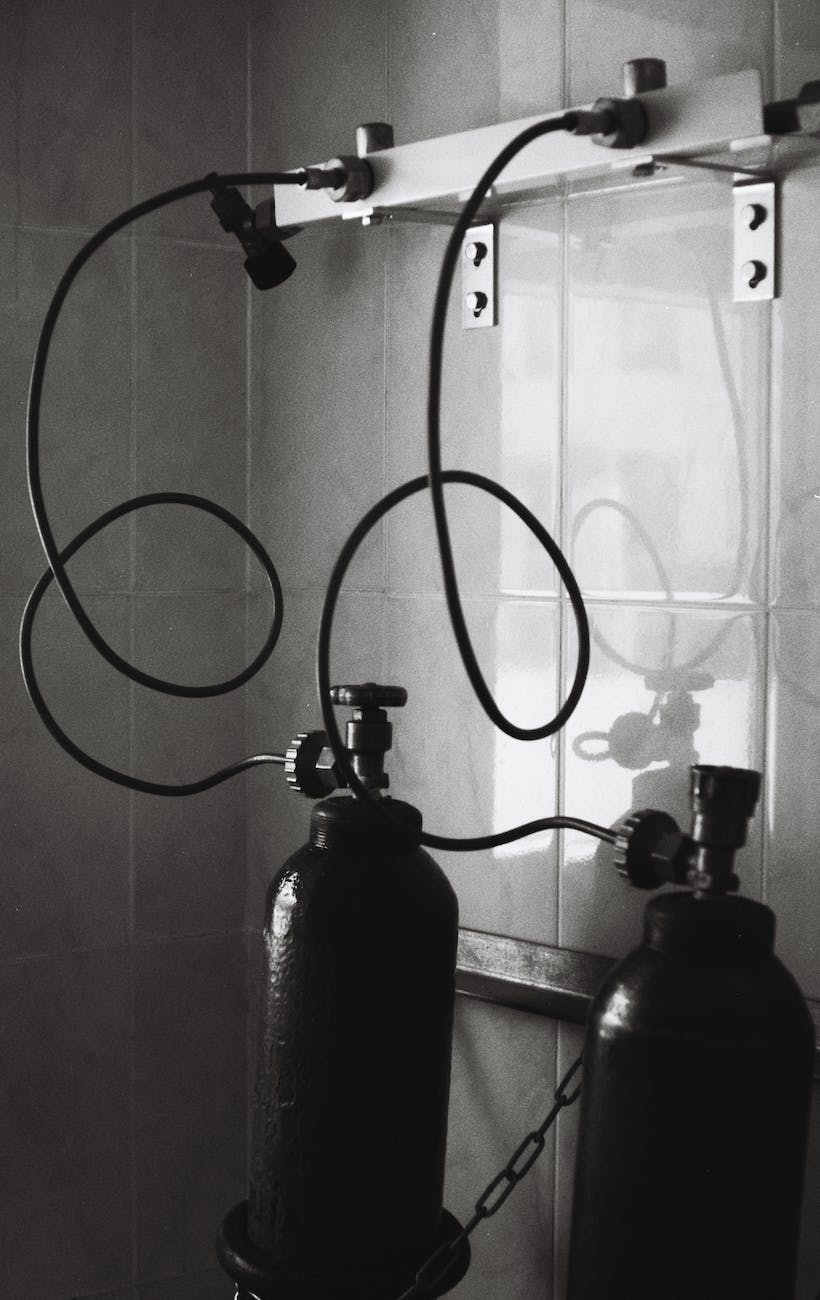
Compressed Gas Cylinder Handling: Storage and Handling Procedures
Introduction
Compressed gas cylinders are commonly used in various industries for tasks ranging from welding to medical applications. While these cylinders are essential, mishandling or improper storage can pose serious safety risks. This article outlines key procedures for the safe storage and handling of compressed gas cylinders, ensuring the well-being of workers and maintaining a secure workplace environment.
Storage Procedures for Compressed Gas Cylinders
- Segregation by Gas Type
- Segregating compressed gas cylinders based on their contents
- Preventing incompatible gases from being stored together to minimize the risk of chemical reactions or contamination
- Secure Storage Areas
- Designating secure storage areas for compressed gas cylinders
- Ensuring proper ventilation and protection from external elements to maintain the integrity of the cylinders
- Proper Labeling
- Clearly labeling each compressed gas cylinder with its contents
- Providing essential information such as gas name, hazard symbols, and emergency contact details for quick identification
- Stable Cylinder Positioning
- Ensuring that cylinders are stored in an upright and stable position
- Using appropriate restraints, such as chains or brackets, to prevent cylinders from falling or tipping over
- Away from Heat Sources
- Keeping compressed gas cylinders away from heat sources, open flames, or direct sunlight
- Preventing the cylinders from reaching temperatures that could compromise their structural integrity or cause pressurization issues
- Protection from Physical Damage
- Implementing measures to protect cylinders from physical damage
- Using barriers or protective guards to shield cylinders from potential impact, collisions, or other hazards
- Regular Inspection of Storage Areas
- Conducting regular inspections of storage areas for compressed gas cylinders
- Identifying and addressing any issues such as leaks, damage, or improper storage practices promptly
Handling Procedures for Compressed Gas Cylinders
- Proper Lifting Techniques
- Training personnel in proper lifting techniques when handling compressed gas cylinders
- Emphasizing the importance of using mechanical aids or equipment for heavy cylinders to prevent injuries
- Secure Transportation
- Using appropriate carts, dollies, or carriers for transporting compressed gas cylinders
- Ensuring that cylinders are securely fastened to prevent movement during transportation
- Valve Protection Caps
- Installing valve protection caps on cylinders when not in use
- Preventing contaminants from entering the cylinder and protecting the valve from damage during handling
- Avoiding Dragging or Rolling
- Prohibiting the dragging or rolling of compressed gas cylinders
- Ensuring that cylinders are lifted and transported with care to avoid damage to the cylinder body or valve
- Personal Protective Equipment (PPE)
- Mandating the use of appropriate PPE when handling compressed gas cylinders
- Providing workers with safety gloves, eye protection, and any necessary respiratory protection to minimize the risk of exposure
- Training on Emergency Procedures
- Providing comprehensive training on emergency procedures related to compressed gas cylinder mishaps
- Instructing personnel on how to respond to leaks, spills, or other emergencies in a safe and efficient manner
- Documentation of Handling Activities
- Maintaining records of compressed gas cylinder handling activities
- Documenting information such as date, time, personnel involved, and any incidents or issues encountered during handling
Conclusion
In conclusion, the safe storage and handling of compressed gas cylinders are paramount to workplace safety. By adhering to proper storage procedures, including segregation, labeling, and regular inspections, organizations can prevent accidents and ensure the integrity of the cylinders. Additionally, implementing careful handling procedures, providing adequate training, and using necessary protective measures contribute to a secure environment where the risks associated with compressed gas cylinders are minimized.
Mental Health in the Workplace: Addressing Psychological Safety as a Safety Officer
Safety Inspections: A Step-by-Step Guide for Safety Officers
Implementing and Evaluating Safety Training Programs for Employees
Occupational Health and Safety Trends: Staying Ahead as a Safety Officer
Emergency Response Planning: Best Practices for Safety Officers
Frequently Asked Questions (FAQs)
- Why is segregation by gas type important in the storage of compressed gas cylinders?
- Segregating compressed gas cylinders based on their contents prevents incompatible gases from being stored together, minimizing the risk of chemical reactions or contamination.
- What are the key elements of proper labeling for compressed gas cylinders?
- Proper labeling includes essential information such as gas name, hazard symbols, and emergency contact details. Clear labeling facilitates quick identification of cylinder contents.
- Why is it important to store compressed gas cylinders away from heat sources?
- Storing compressed gas cylinders away from heat sources prevents the cylinders from reaching temperatures that could compromise their structural integrity or cause pressurization issues.
- How does valve protection caps contribute to safe handling of compressed gas cylinders?
- Valve protection caps prevent contaminants from entering the cylinder and protect the valve from damage during handling, ensuring the integrity of the cylinder’s contents.
- Why is the use of personal protective equipment (PPE) essential when handling compressed gas cylinders?
- The use of PPE, such as safety gloves, eye protection, and respiratory protection, minimizes the risk of exposure when handling compressed gas cylinders, ensuring the safety of personnel.
- What are the benefits of documenting handling activities for compressed gas cylinders?
- Documenting handling activities allows organizations to maintain records of important information, including dates, personnel involved, and any incidents encountered. This documentation aids in tracking and addressing issues promptly.






















nice